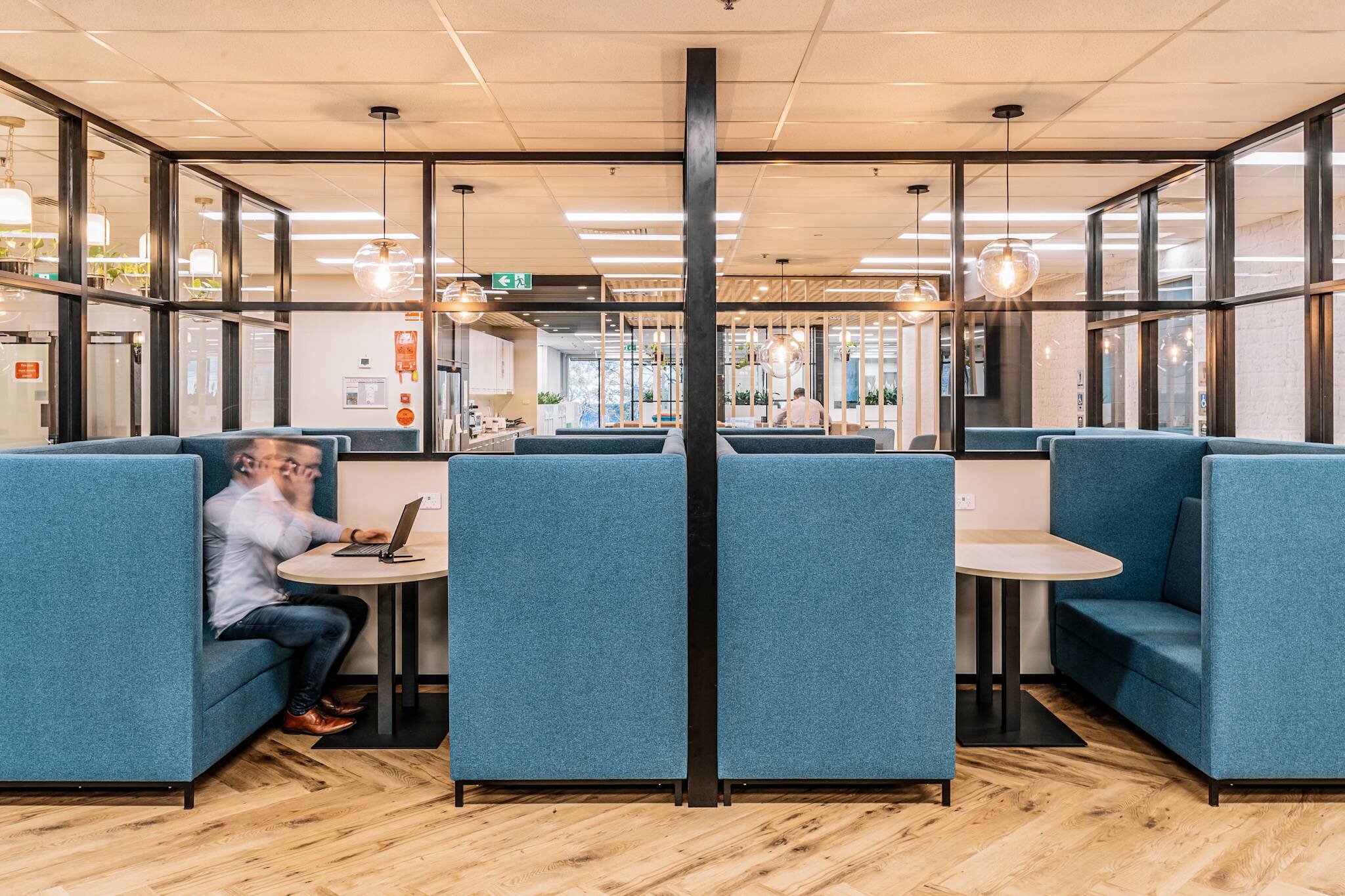The evolution of the modern workspace
For the last 12 months, there have been numerous articles written questioning the necessity of the traditional office and the modern workplace.
With millions of workers forced to work from home during the global pandemic, businesses have been quick to adapt to the change in environments, with many debating just how crucial the physical office is in 2020.
Before we get into the important statistics and discussion, let’s begin with a little quiz (give yourself a pat on the back if you get all five).
With many of us have been forced to work from home over the past months, adapting spare rooms into home offices and juggling work and home life, with the line becoming increasingly blurred – we now work and live in the same space, and the previous demarcation between work and personal lives has become a thing of the past.
For some, the added time benefit of not having a lengthy commute to work has meant more time to engage in new hobbies and restoring old routines. For others, the challenge of balancing ‘work time’ from ‘home-time’ has been a much harder transition.
Now that semblances of normality are resuming, and offices are reopening, many are rethinking their attitudes towards the necessity of returning to that commute and forsaking elements of their ‘new normal’.
For months now our team has been debating whether our current climate conditions will herald a new evolution of the office and a shift in attitudes towards ‘Flexi-work’ and WFH. After watching countless webinars from experts across the globe, discuss their current workplace challenges, many of us are still undecided.
After much debate, the facts remain – out here in regional Australia, we are yet to see any real positive shift towards WFH culture that major cities are seeing across the globe.
At the height of the first wave, many regional businesses encouraged staff to work from home, but still kept the doors open for staff wanting to work from the office, with strict social distancing measures in place. Fast forward three months and very little has changed.
Given that the majority of outbreaks have occurred in metropolitan areas of Sydney and Melbourne, most regional businesses are continuing to open their doors to employees, as well as give them the option to work from home.
Speaking with members of the business community, many indicated quite strongly that once the novelty of ‘work from home’ wore off, they were actually excited to return to the office.
Fundamentally, working conditions in regional towns are very different for those working in major cities. On average, commute times are shorter and working conditions tend to be more flexible, with many young professionals looking to raise young families away from the hustle and bustle of suburban cities.
However, regional businesses certainly can’t afford to fall behind when it comes to delivering positive work experiences and office environments for their staff.
With the event of COVID-19, many national businesses have started to crunch the numbers to determine if a switch to the bush, could prove a masterstroke for their bottom line.
With ten major Australian businesses signed up to the Regional Australia Council 2031 – the commitment to making flexible long-term employment a reality for workers is an encouraging sign for regional towns who have toiled through years of drought and most recently, devastating bushfires.
Speaking directly with business owners the overall assessment of the current workplace situation remains positive.
“We are seeing high numbers of staff returning to the office and adhering to strict COVID policy measures. If everyone can just stay away from Sydney and Melbourne we should continue to operate as normal”.
As for whether or not they would be looking to downsize their current office space, the overwhelming conscientious was a resounding – No.
Working with our own Formline clients, we are witnessing a trend towards creating spaces that are less traditionally defined and linear i.e. an open plan desk space for working, meeting rooms for collaboration, and breakout spaces for coffee and lunch.
The layout and design of the space are increasingly being dictated by employee needs and increasingly, we are being asked to design and build workplaces which include dedicated spaces for concentrated work, be they 1-person pods or quiet library inspired spaces, for collaboration outside of a meeting room in open collaboration spaces which facilitate more movement and general interactivity, and for relaxation in enhanced breakout spaces and even spaces to allow staff to unwind.
The current pandemic was forced upon us but one of its intriguing byproducts has been an increased focus on how effective we as employees can be outside of the normal work environment, but also the future of the office space and how we can reshape it into something far more effective and accommodating of modern employee needs.
The hub concept is one we believe will gather momentum and is not that dissimilar to the concept of co-working spaces, but in this case, they would be designed to suit a singular brand, not multiple SMEs.
As for determining how busy office traffic will be day-to-day? It is clear that many regional businesses will encourage staff to potentially work 1-2 days at home if they need they require flexibility (i.e raising young families, living remotely). Ideally, the office space will continue to be the optimal place for collaboration and engagement.
We live in interesting times and how the workplace evolves over the coming years will be watched keenly by employers, employees and office designers like Formline, but one thing is for sure, change is coming, and coming fast.
Watch this space…




